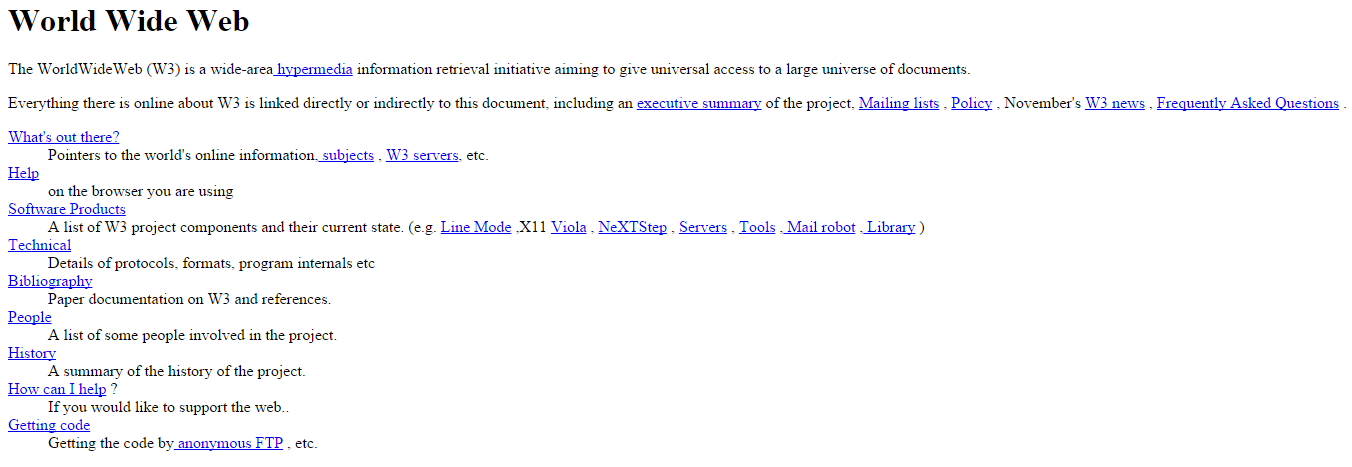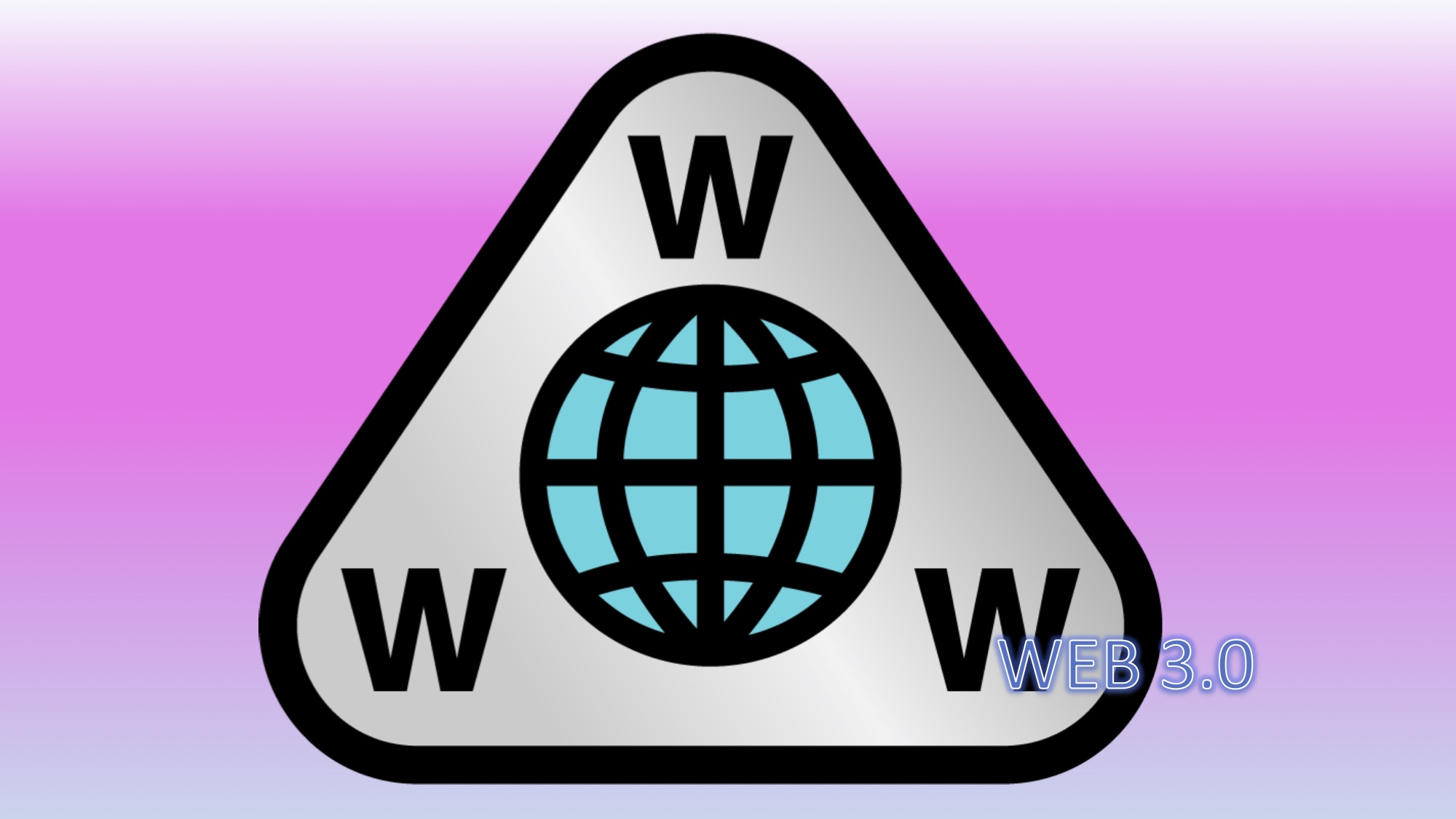On August 6, 1991, while employed at CERN, a huge particle physics laboratory in Switzerland, British computer scientist Tim Berners-Lee created the first ever website. Berners was so tired of searching for and combining information from thousands of scientists’ computers scattered around the world that he figured out a way to network them together using hypertext, a technology that allows you to retrieve a document or piece of content by clicking on a coded word or phrase. Berners’ boss initially rejected the idea, calling it “vague but exciting.” However, a few years later, Berners-Lee brought the project to life. After calling the project Information Management, he tried out names such as Mine of Information and Information Mesh before settling on WorldWideWeb.
This is how the first website in human history looked like.

Since then, the WorldWideWeb has grown to unprecedented scale, attracting more than 5 billion regular users – approximately 63% of the world’s population.
Nowadays, the Internet, along with humanity, is on the verge of a new wave of transformation, the so-called Web 3.0. Researchers consider this evolutionary model of the WorldWideWeb to be the greatest vision and the greatest threat at the same time.
Whatever the consequences, one thing is clear: the transformation of the Internet is inevitable that will affect all spheres of human life on the planet, just as it did in the 1990s.
What is Web 3.0 and what to expect from it?
The World Wide Web is a system of interconnected documents that we access via the Internet. Since its inception, the World Wide Web has gone through several major stages of development.
Web 1.0, early version of the Internet, 1990-2004
Web 1.0 is the hypertext Internet. These were static pages and images that could be read and viewed, except for the ability to edit the content. This was the era of personal websites, where only the developer could change elements on the site. Users could not interact with the pages. These pages took data from static files, so websites were not interactive.
Web 2.0, the modern Internet, 2004 –now
The early 2000s brought social networking sites to the world. The Web 2.0 Internet turned inactive observers into content creators enabling not only to read, write, and distribute data, but also to process and store it. Web 2.0 has been called the “social web” because of the participation of billions of people in its creation, who also actively interact with each other, exchanging opinions and visual content. Growing rapidly, Web 2.0 attracted more and more users, and at the same time those, who tried to make money from them. Nowadays, monopoly companies control a large amount of traffic on the web, collect user data, and generate revenue by selling it to advertisers.
Web 3.0 aims to deconstruct this system and allow users to become owners of their data and store it on various decentralized servers.
The natural evolution of the World Wide Web
Web 3.0 is called the semantic web: when people and computers communicate easily and efficiently. You talk to a computer as if it was a friend, and it understands you. Machines distinguish between natural words and speech and are better able to meet human requests.
However, its basic innovation is decentralization. It does not involve a center that would manage the interaction. The key to this approach is the use of the so-called distributed ledger and blockchain technology.
The Internet of the future is an open network where people can easily create unique, highly customized applications that other users can interact with.
Cryptocurrencies, decentralized applications (dApps), non-fungible tokens (NFTs), and the integration of artificial intelligence into web processes are no less important elements of the Web 3.0 concept.
The principles of the innovation are still being formed, but several fundamental advantages are already evident:
- Decentralization. Unlike Web 2.0, where the World Wide Web is controlled by large centralized companies, Web 3.0 is owned by users and developers equally.
Accessibility. Each user has equal access to the network.
Managing your data. The decentralized architecture offers users more control over their data, which will usually be protected in the blockchain using public and private key cryptography.
Smart contracts. The key innovation is financial services and transactions that can be carried out using smart contracts: the procedure is regulated by the policy defined in the program code.
Trust. In Web 3.0, trust is formed through transparent and simple transaction mechanics based on blockchain technologies: the rules of the transaction are spelled out in smart contracts that the participants agree to.
A separate financial system. The new system uses cryptocurrency to make transfers. Intermediaries such as banks become redundant.
Artificial intelligence and machine learning integrated into the structure of the Internet will make it more flexible and efficient in its ability to meet the needs of users and predict their intentions.
Integration into the meta-universe. Web 3.0 will become a part of the virtual space, combining with innovations in virtual reality (VR), augmented reality (AR), and 3D product visualization
Ubiquity. The system is designed to be available to anyone, on any device and in any application. It will be easily distributed, including through the network of Internet of Things (IoT) devices.
- Although Web 3.0 certainly has many positive qualities that seem exciting, it also has disadvantages and risks that need to be considere
Here are some of the disadvantages:
- Complexity. It may be difficult for ordinary users to understand the mechanics of blockchain, decentralized networks, and smart contracts.
- Security. Ensuring cybersecurity can be a challenge for users, making them targets for hackers and cybercriminals.
- The need for regulation. Web 3.0 will create new interaction practices that will need to be regulated, including online commerce security, new forms of ownership of intangible objects or privacy policies, etc.
- Technological requirements. Since the technologies of the new system are often resource-intensive, less advanced gadgets are likely to be unable to work with it.
- Carbon footprint. New technologies leave a much larger carbon footprint than their predecessors, so it is necessary to adapt them to be more environmentally friendly.
- Online life. People will spend more time online, avoiding live communication and interaction.
Potentially, Web 3.0 will take many forms, including decentralized social networks, play-to-earn games, or NFT platforms. Its visionaries generally predict a radical revolution, when online monopolies will disappear and a new digital economy will be launched without intermediaries.
It is logical to assume that if Web 1.0 was a place where people read websites, Web 2.0 gave users the opportunity to interact, then Web 3.0 will change both how websites are created and how people interact with them. The progress it will bring to the Internet will take it to an unprecedented level. Computer researchers and Internet specialists recognize that these advances will make the Internet smarter and our lives easier, but only if humanity neutralizes all the “side” effects that the development of this concept may bring.web
Source: The Gaze







